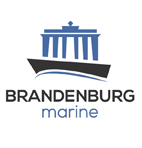Loss Prevention Advice
- Details
- News /
The Alternative Fuels Watch report by Britannia P&I provides an update on alternative fuels in the maritime industry, such as biofuels, LNG, methanol, ammonia, and hydrogen. This publication is valuable for understanding current fuel innovations and regulatory changes aimed at reducing emissions in shipping, supporting industry stakeholders in selecting sustainable fuel options.
Full advisory at the following link.
- Details
- News /
Israel has issued an evacuation warning for three Houthi-controlled ports, following recent airstrikes and tension in the area.
The alert was issued by an Israel Defence Forces (IDF) spokesperson in a social media post on 11 May, urging individuals at the ports of Ras Isa, Hodeidah, and Al-Salif to evacuate immediately.
“Due to the terrorist Houthi regime’s use of seaports for its terrorist activities, we urge all those present at these ports to evacuate and stay away from them for your own safety until further notice” said IDF spokesperson Avichay Adraee.
To remind, this warning comes after Israel’s airstrikes on Yemen’s Hodeidah Port on 5 May, which were a retaliatory response to a missile attack by Iran-backed Houthi forces that struck near Israel’s main airport the previous day.
- Details
- News /
Operators of vessels trading in FSMC high-risk regions of key preventive measures, offering practical tips to help crews inspect, remove, and properly dispose of egg masses to reduce infestation risks.
The Flighted Spongy Moth Complex (FSMC), which includes Lymantria dispar asiatica, Lymantria dispar japonica, Lymantria albescens, Lymantria umbrosa, and Lymantria postalba, is a highly destructive forest pest found primarily in Asia and Russia. Its larvae feed aggressively on both deciduous and coniferous trees, and the female moth’s ability to fly up to 20 nautical miles enables rapid spread, leading to severe defoliation and weakening of forests.
- Details
- News /
Mitigation measures after noting a steady increase in dry cargo shortage claims in Vietnam.
The data reveal that cargo claims in ports such as Cai Mep and Phu My have nearly tripled from 2020 to 2024. These claims encompass various types of cargo, including soybean meal, corn and fertilizers. Although they typically don’t involve very high exposure, their frequency underscores the need to share the knowledge and advice on the topic. The primary reason for shortage claims is twofold:
- Multiple Bills of Lading for bulk cargoes. In many cases, multiple bills of lading are issued to different receivers for parts of a bulk cargo. These cargoes may vary in type. In these cases, owners or carriers can be held liable—under the terms of each bill—for the total quantity delivered to each receiver. The more bills of lading are issued in respect of a bulk cargo, the more likely are individual, often smaller-scale, cargo claims, as receivers tend to assess shortfalls against their specific consignment, irrespective of the total quantity discharged.
- Discharge into barges and transfer to warehouses. It is common practice in Vietnam for cargoes to be discharged into multiple barges before being transferred to shore-based warehouses. This process increases the risk of cargo claims, particularly since it is not always feasible to conduct accurate draft surveys on the barges. Furthermore, the discharge operations may take place simultaneously or sequentially, depending on operational logistics. This makes it harder to accurately match cargo quantities to each receiver, especially when dealing with multiple bills of lading. Still, the liability of the carrier would normally cease upon the cargo’s passing the ship’s rail. Therefore, the distribution to the various receivers would be outside the carrier’s control and responsibility.
Mitigation measures :
- Collecting Records of Receipt of Cargo (ROROC): The ROROC is issued by the terminal and can serve as evidence of the actual quantity of discharged cargo. This document is particularly useful in cases where there is a discrepancy between the draft and the shore survey figures. It can be used to support the operator’s defences, such as that the whole quantity was discharged and the loss of the cargo is due to external factors connected with the stevedores, the transfer of the cargo in warehouses etc.
- Appointing a third Surveyor: When conflicting inspection reports arise, appointing a third-party surveyor is an effective measure to enhance transparency and fairness. This approach helps mitigate prolonged disputes by providing an independent assessment of the issue at hand. A neutral evaluation by a third-party expert may serve as a crucial piece of evidence, especially in cases where the parties have contrasting claims regarding cargo conditions, shortages, or damages.



